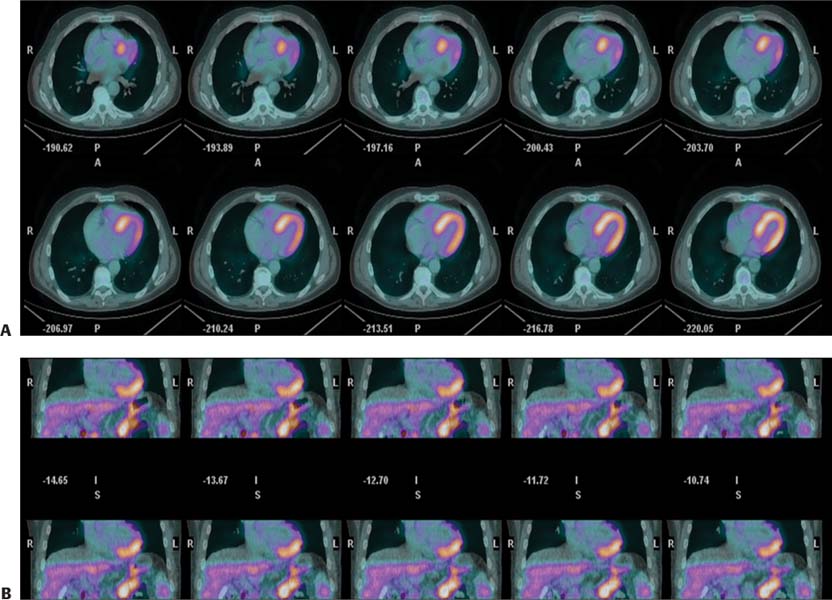CASE 40
Clinical Presentation
A 60-year-old man with no known coronary artery disease is referred for a dipyridamole myocardial perfusion PET study to evaluate for atypical chest pain. Cardiac risk factors include hypertension. The resting ECG is normal. Medications include atenolol and aspirin.

Fig. 40.1
Technique
• The patient had nothing to eat within 4 hours of the test. The β-blocker (atenolol) was withheld on the day of the test. Caffeinated beverages were withheld for 24 hours before the test.
• After a scout CT acquisition (120 kVp, 10 mA) for patient positioning, a CT transmission scan (140 kVp, 30 mA, pitch of 1.35) was acquired for attenuation correction. Commercial software was used for coregistration of the transmission and emission images.
• Rest emission images were obtained after the intravenous administration of 50 mCi of 82Rb at rest. Imaging began 90 seconds after completion of the radionuclide infusion for a total imaging time of 5 minutes.
• Gated images were acquired at 8 frames per cardiac cycle.
• Images were reconstructed with ordered subsets expectation maximization (OSEM; 2 iterations and 30 subsets), and a three-dimensional PET filter was used (Butterworth filter cutoff frequency of 10, order of 5).
• After rest image acquisition, vasodilator stress was achieved with a standard intravenous infusion of dipyridamole (0.14 mg/kg per minute) for 4 minutes.
• At 7 minutes after the start of the dipyridamole infusion, 50 mCi of 82Rb was injected.






